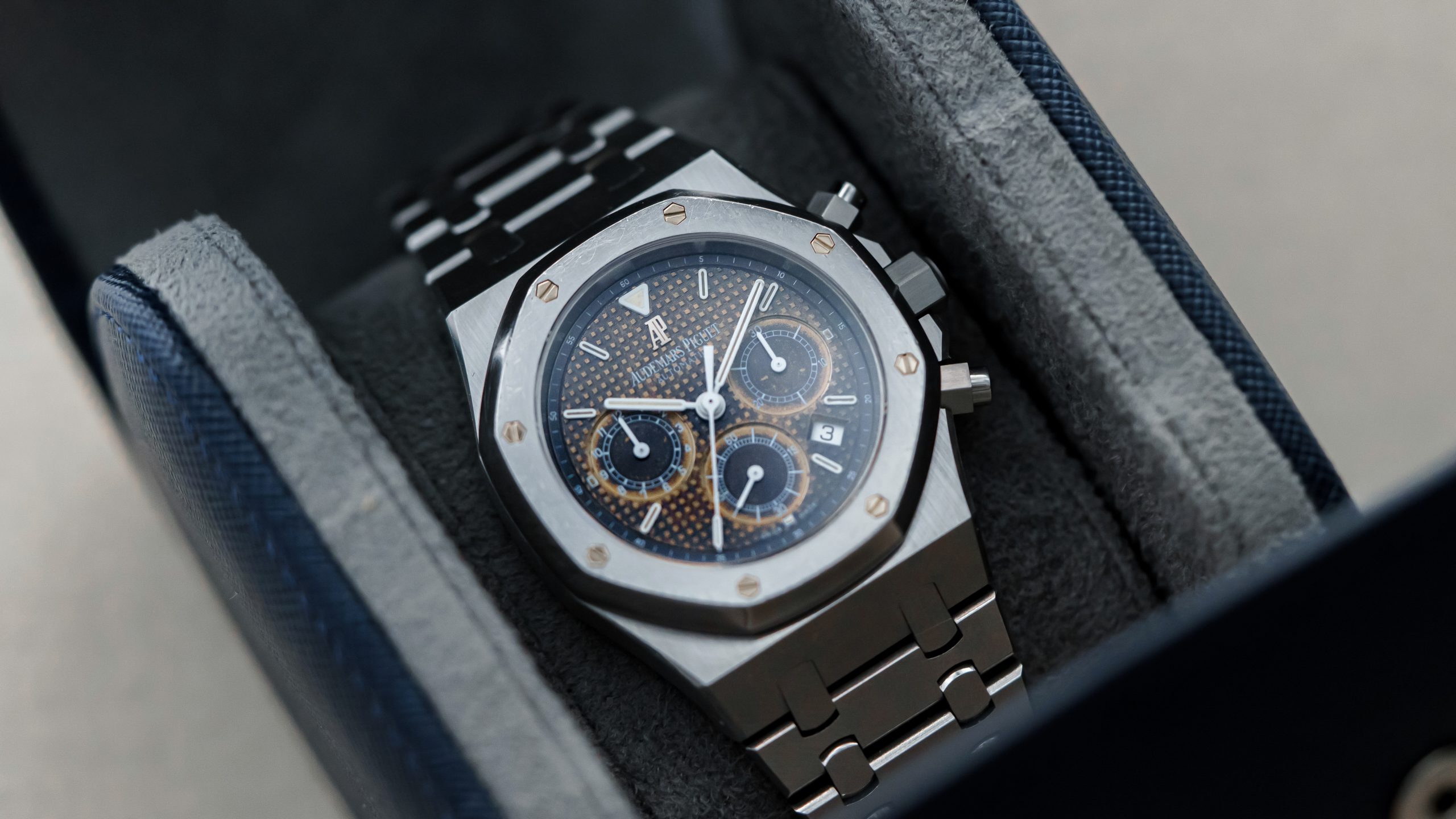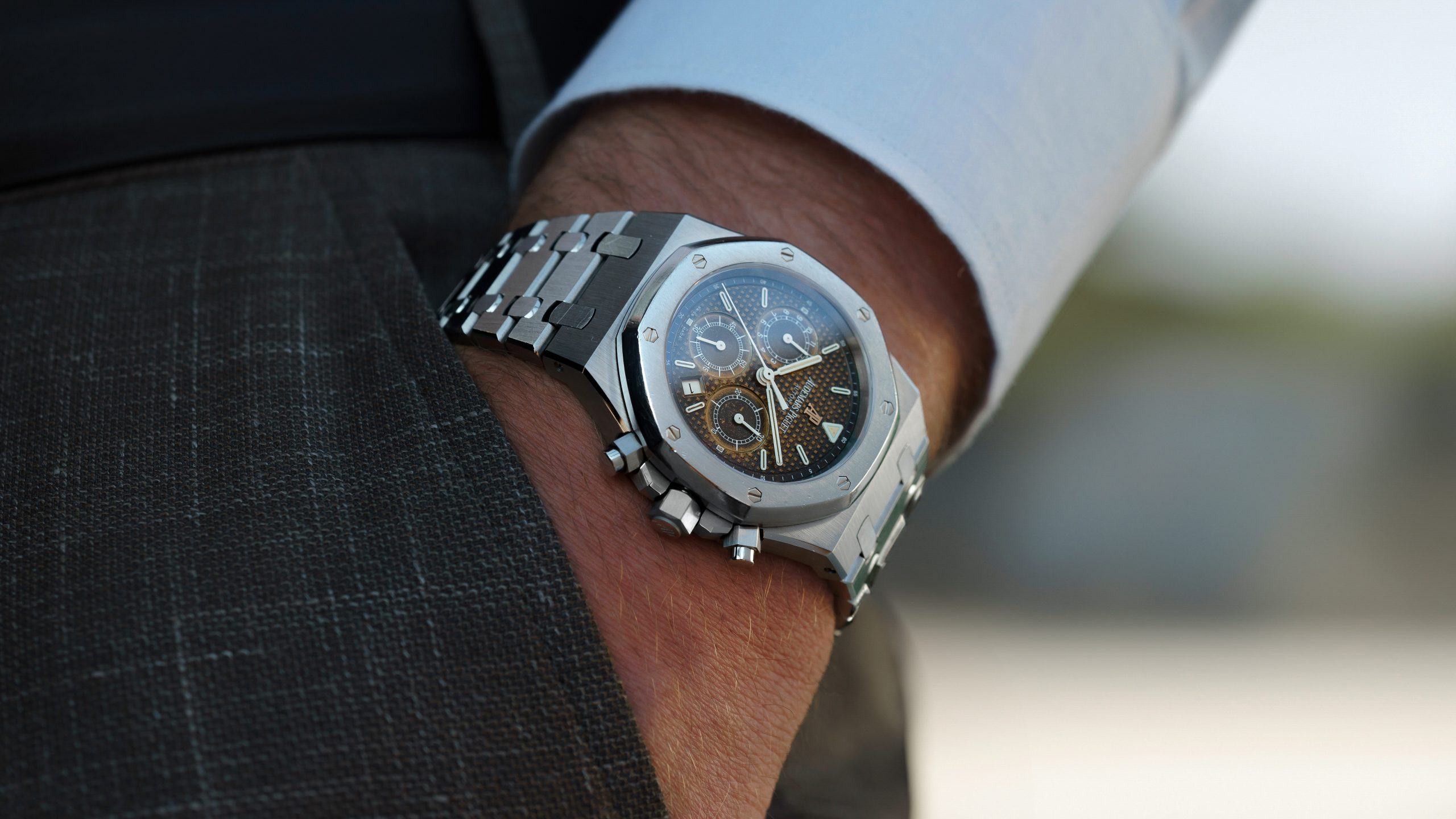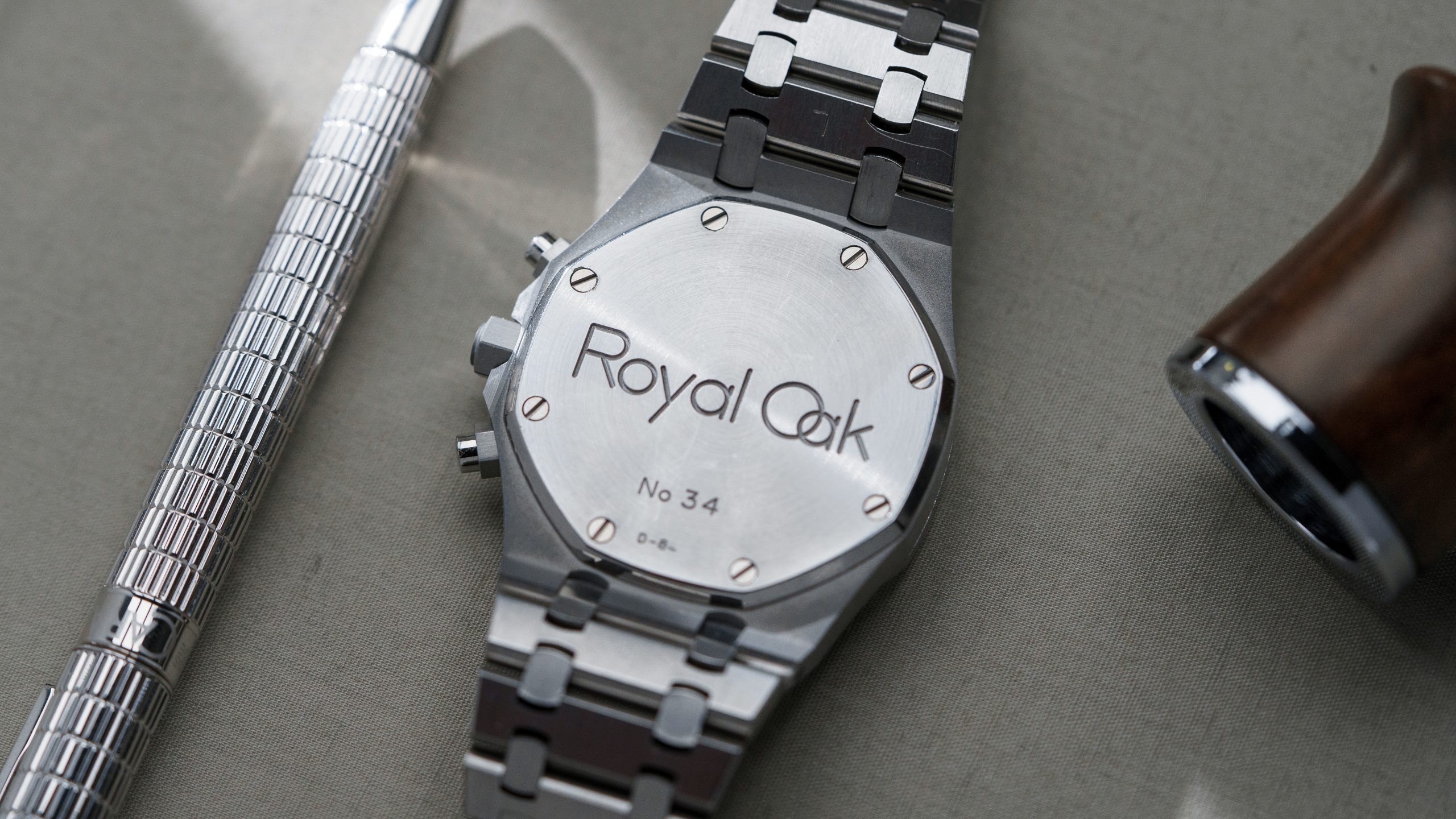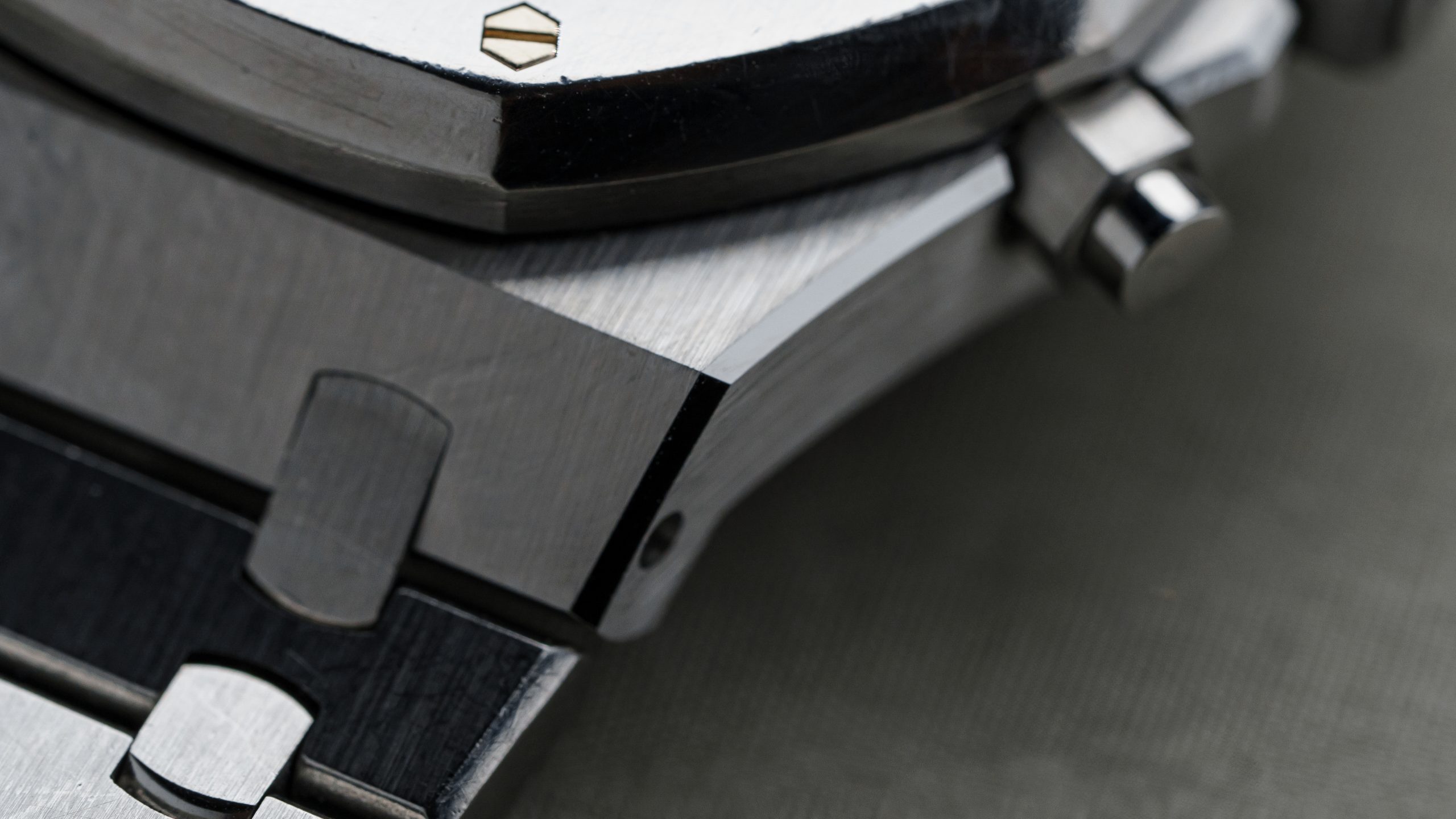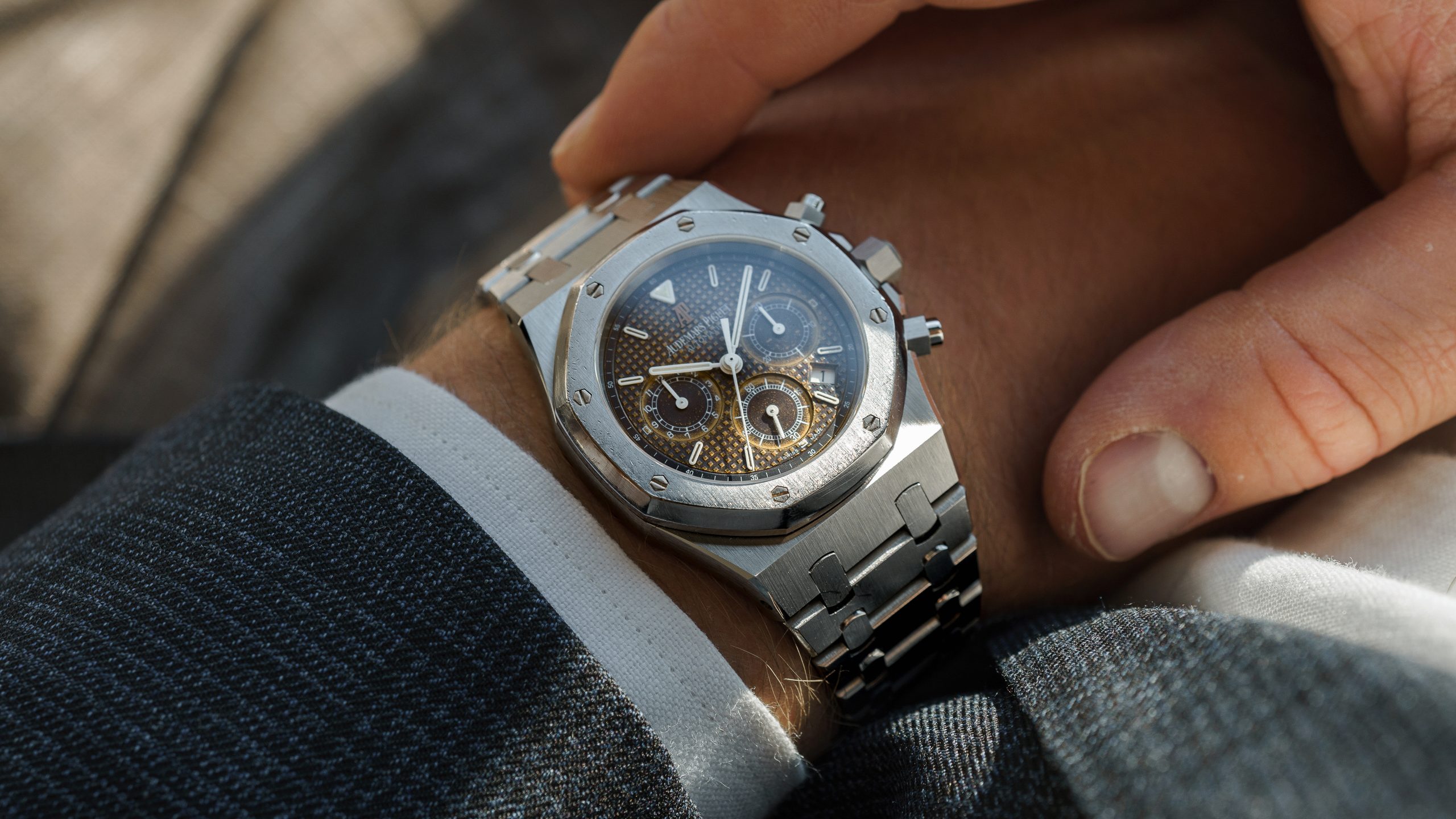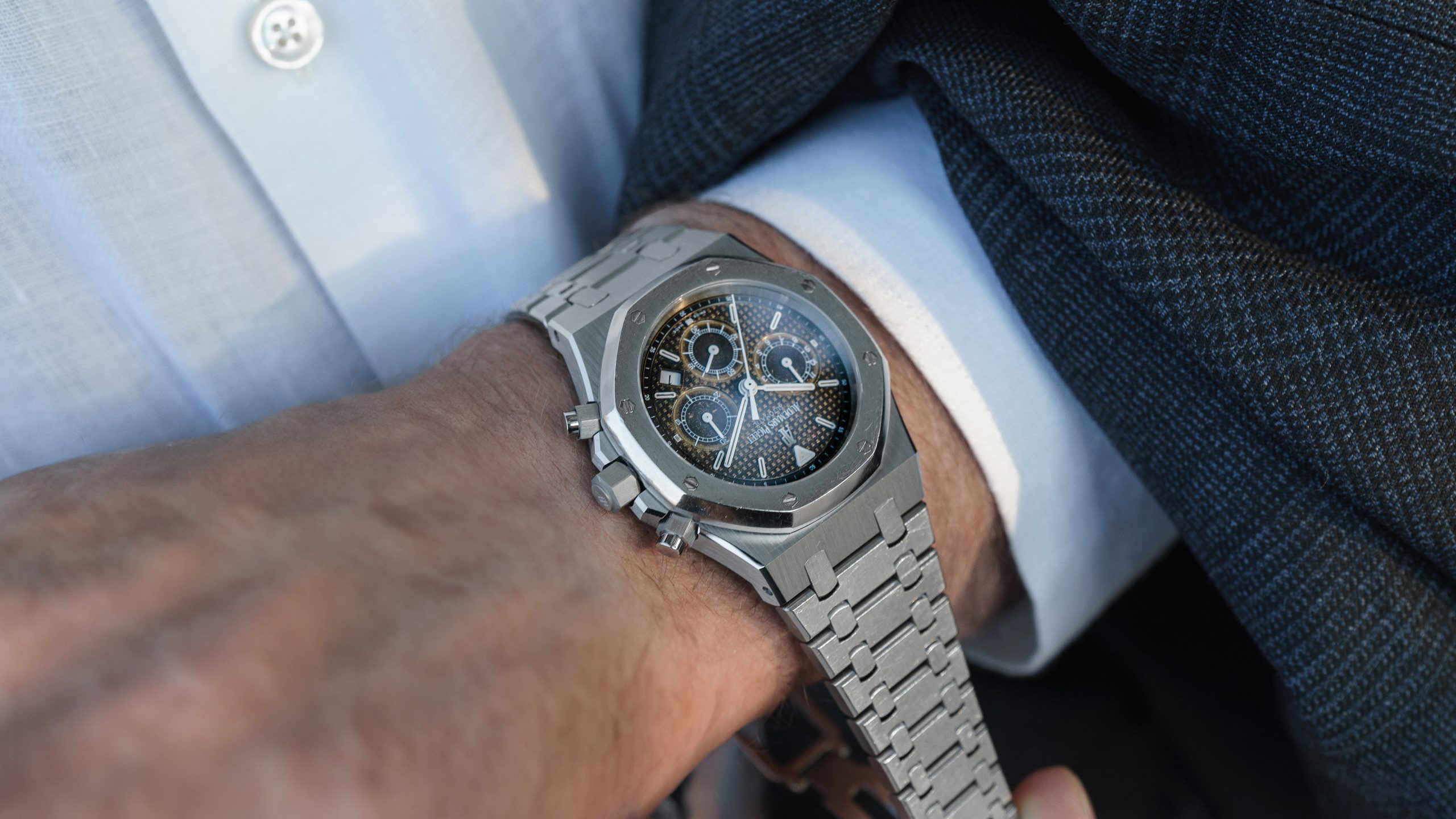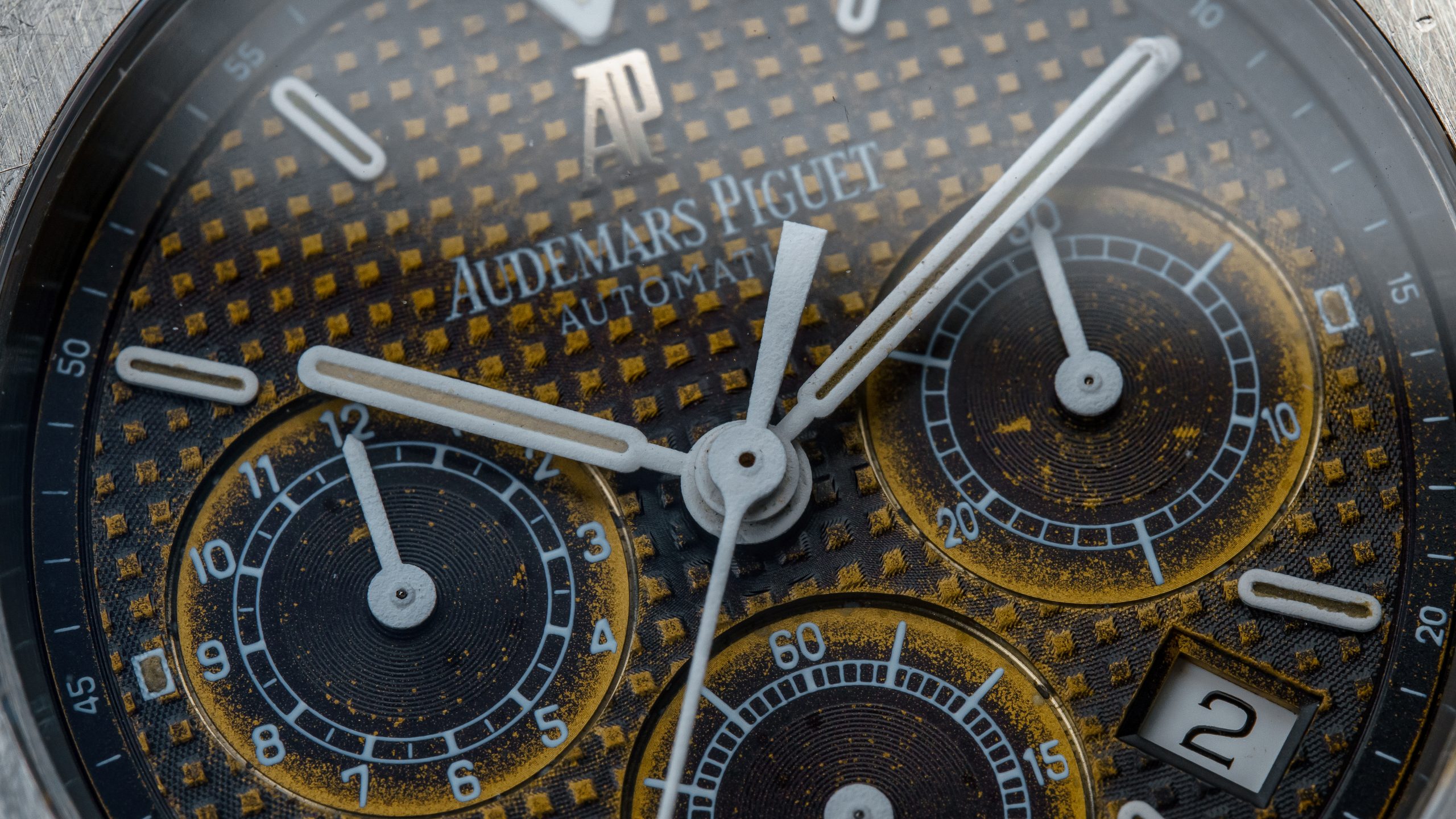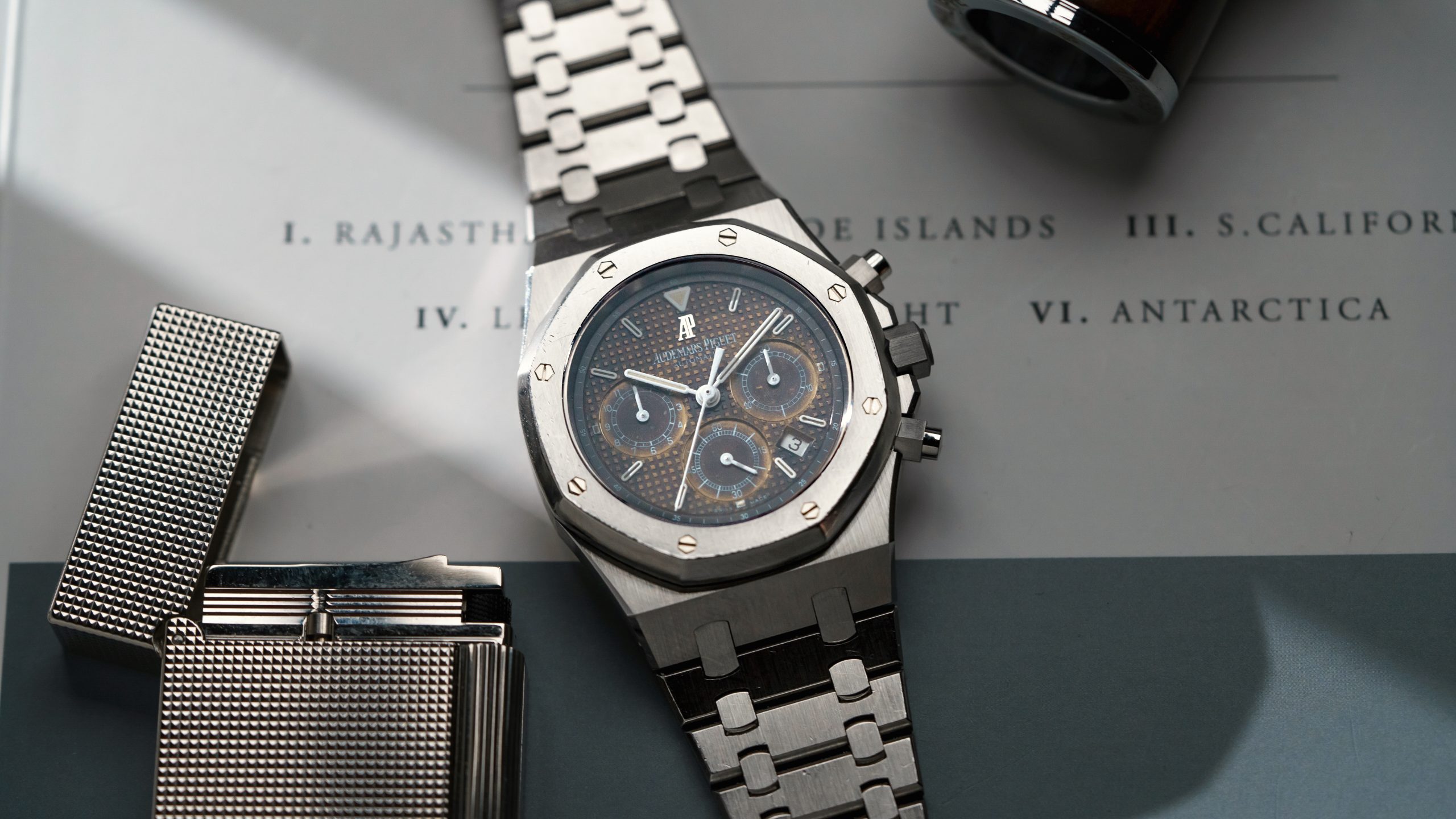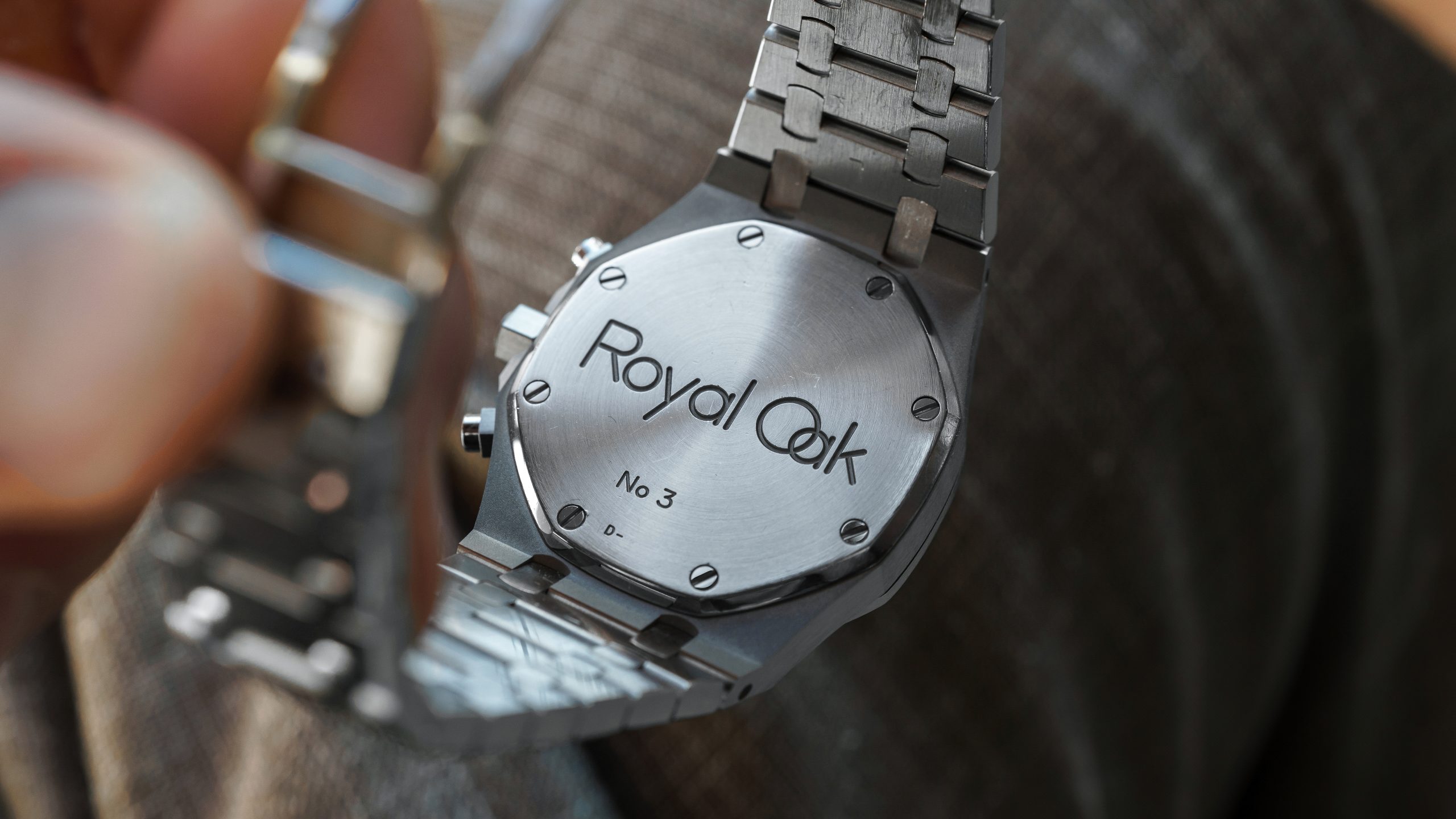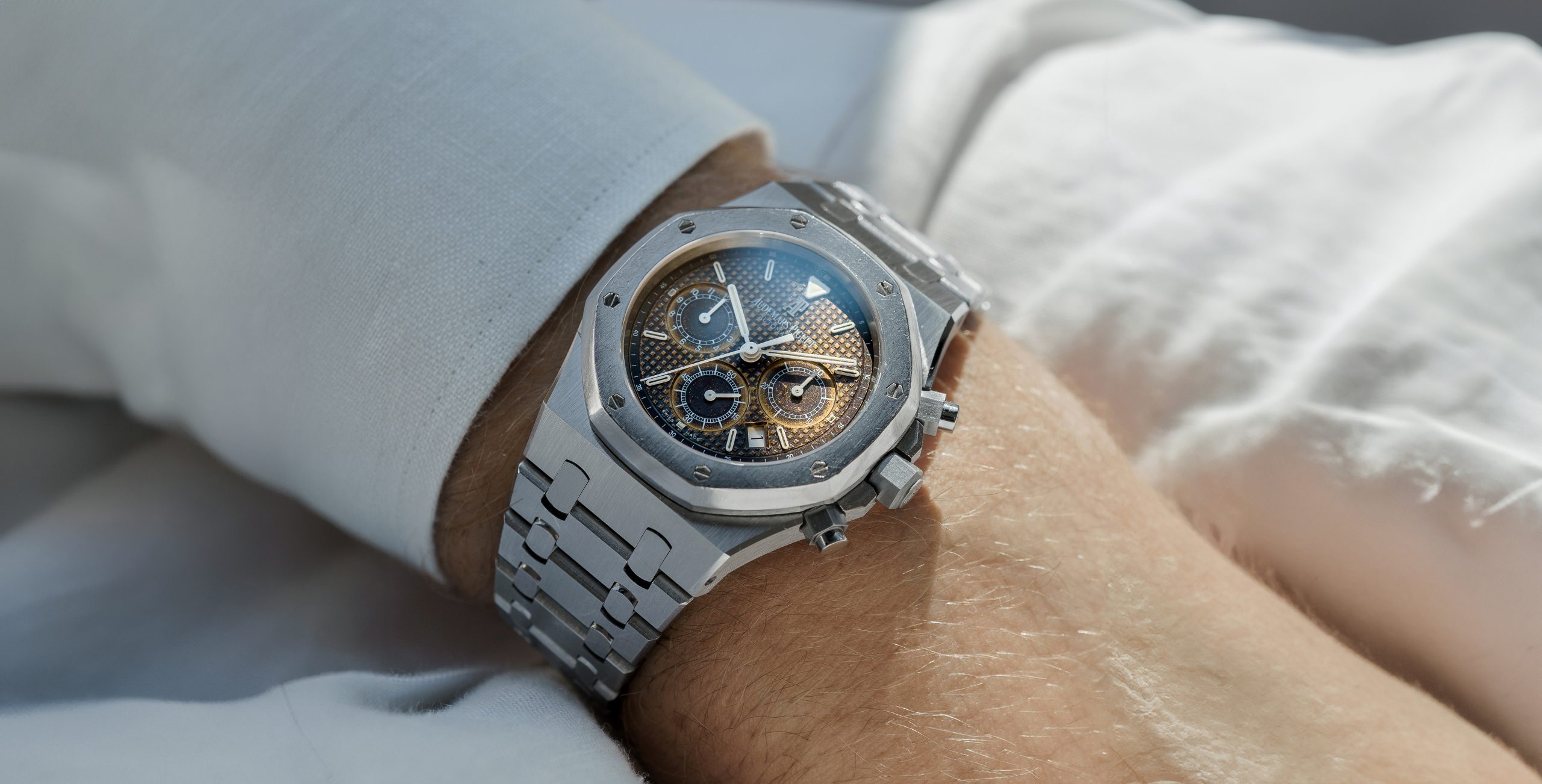This 25860ST was the first Royal Oak Chronograph, introduced in 1997 for the Royal Oak's 25th Anniversary, and is not to be conflated with the Offshore. Unlike the Emmanuel Gueit design, the 25860ST was true to the original Genta design at 39mm. It used the world thinnest self-winding chronograph calibre to not alter the proportions of the way a Royal Oak Jumbo should wear. The 25860 is better known by the name 'Kasparov', as it was the Audemars Piguet of choice for Gary Kasparov, chess grandmaster, throughout the 90s and early 2000s.
The 25860 was in production for nearly 14 years, over which time it evolved considerably through a myriad of configurations. This D series hails from the very start in 1997, and is one of the minority to still feature the traditional 'petite tapisserie' dial, which was replaced by the easier to produce 'grande tapisserie' shortly after the start of production. The 25860 used an automatic calibre 2385, then the flattest self-winding chronograph made at just 5.5mm thin, a 1185 Frédéric Piguet ébauche also used in the Vacheron Constantin Overseas Chronograph. Its 39mm case incorporates hexagonal screw-down pushers. This early example also features what is known as the 'simple' clasp, with a blade bearing the Gay Frères signature.
This particular petite tapisserie dial stands out for its astounding caramel-navy tropical patina, a beautiful side effect found in the final years of petite tapisserie production. Across the final years of 25730 Dual Times, 25721 'The Beast', and this 25860 'Kasparov', the galvanic process used for the brighter blue tone was unstable, but corrected shortly after. From a brief window of production around the late 1990s, we observe this type of extreme patina with caramel and navy together on the dial, as the galvanic coat fades to reveal the brass dial base beneath. The tones that result after UV exposure can range from blue-purple to gold or just brass caramel. This example sports a symmetric and beautiful gradient.
Up until 1997, all early Audemars Piguet chronographs such as 'The Beast' Offshore had sought revolution over evolution. Client reception was lukewarm and Genta, reportedly, hated the Offshore design. The 25860 chose to not reinvent the wheel, a return to form and traditional Royal Oak proportion for a complication that was always missing from the line. It is said that in Gary Kasparov's final moves for a game, once he knew he had his opponent caught dead-to-rights, he would take is Royal Oak Chronograph off his wrist and set it on the table. That subtle move became a death sentence for his adversaries, a harbinger of defeat. Today, setting this 25860ST down on a table in any AP House would have a similar effect to the entire modern collection. It is the way the Royal Oak Chronograph was always meant to look, a more refined proportion than anything which came before or after.


